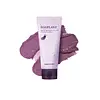What's inside
What's inside
 Key Ingredients
Key Ingredients

 Benefits
Benefits

 Concerns
Concerns

 Ingredients Side-by-side
Ingredients Side-by-side

Water
Skin ConditioningGlycerin
HumectantKaolin
AbrasiveCaprylic/Capric Triglyceride
Masking1,2-Hexanediol
Skin ConditioningPhaseolus Angularis Seed Powder
Hectorite
AbsorbentCetyl Alcohol
EmollientGlyceryl Stearate Se
EmulsifyingCetearyl Olivate
Sorbitan Olivate
EmulsifyingPhaseolus Angularis Seed Extract
AntioxidantUltramarines
Pyrus Communis Fruit Extract
Skin ConditioningEthylhexylglycerin
Skin ConditioningSodium Acrylate/Sodium Acryloyldimethyl Taurate Copolymer
Emulsion StabilisingHedera Helix Leaf/Stem Extract
AntimicrobialPolyisobutene
Fragaria Chiloensis Fruit Extract
Skin ConditioningPyrus Malus Leaf Extract
Skin ConditioningCI 77491
Cosmetic ColorantCaprylyl/Capryl Glucoside
CleansingSorbitan Oleate
EmulsifyingTriethoxycaprylylsilane
Water, Glycerin, Kaolin, Caprylic/Capric Triglyceride, 1,2-Hexanediol, Phaseolus Angularis Seed Powder, Hectorite, Cetyl Alcohol, Glyceryl Stearate Se, Cetearyl Olivate, Sorbitan Olivate, Phaseolus Angularis Seed Extract, Ultramarines, Pyrus Communis Fruit Extract, Ethylhexylglycerin, Sodium Acrylate/Sodium Acryloyldimethyl Taurate Copolymer, Hedera Helix Leaf/Stem Extract, Polyisobutene, Fragaria Chiloensis Fruit Extract, Pyrus Malus Leaf Extract, CI 77491, Caprylyl/Capryl Glucoside, Sorbitan Oleate, Triethoxycaprylylsilane
Solanum Melongena Fruit Extract 66%
Skin ConditioningKaolin 14%
AbrasivePropanediol
SolventDipropylene Glycol
HumectantIsononyl Isononanoate
Emollient1,2-Hexanediol
Skin ConditioningUltramarines
Arachidyl Alcohol
EmollientCetyl Alcohol
EmollientGlyceryl Stearate
EmollientStearyl Alcohol
EmollientBehenyl Alcohol
EmollientCI 77491
Cosmetic ColorantTitanium Dioxide
Cosmetic ColorantJuglans Regia Shell Powder
AbrasiveArachidyl Glucoside
EmulsifyingSalvia Hispanica Seed Extract
EmollientCentella Asiatica Extract
CleansingHouttuynia Cordata Extract
Skin ConditioningPotassium Cetyl Phosphate
EmulsifyingBentonite
AbsorbentBetula Alba Juice
AstringentWater
Skin ConditioningGlyceryl Stearate Se
EmulsifyingEthylhexylglycerin
Skin ConditioningXanthan Gum
EmulsifyingTocopheryl Acetate
AntioxidantButylene Glycol
HumectantDisodium EDTA
Allantoin
Skin ConditioningGlucose
HumectantCalendula Officinalis Flower Extract
MaskingHydroxycinnamic Acid
Skin ConditioningRutin
AntioxidantSolanum Melongena Fruit Extract 66%, Kaolin 14%, Propanediol, Dipropylene Glycol, Isononyl Isononanoate, 1,2-Hexanediol, Ultramarines, Arachidyl Alcohol, Cetyl Alcohol, Glyceryl Stearate, Stearyl Alcohol, Behenyl Alcohol, CI 77491, Titanium Dioxide, Juglans Regia Shell Powder, Arachidyl Glucoside, Salvia Hispanica Seed Extract, Centella Asiatica Extract, Houttuynia Cordata Extract, Potassium Cetyl Phosphate, Bentonite, Betula Alba Juice, Water, Glyceryl Stearate Se, Ethylhexylglycerin, Xanthan Gum, Tocopheryl Acetate, Butylene Glycol, Disodium EDTA, Allantoin, Glucose, Calendula Officinalis Flower Extract, Hydroxycinnamic Acid, Rutin
 Reviews
Reviews

Ingredients Explained
These ingredients are found in both products.
Ingredients higher up in an ingredient list are typically present in a larger amount.
1,2-Hexanediol is a synthetic liquid and another multi-functional powerhouse.
It is a:
- Humectant, drawing moisture into the skin
- Emollient, helping to soften skin
- Solvent, dispersing and stabilizing formulas
- Preservative booster, enhancing the antimicrobial activity of other preservatives
Cetyl Alcohol is a fatty alcohol. Fatty Alcohols are most often used as an emollient or to thicken a product.
Its main roles are:
Though it has "alcohol" in the name, it is not related to denatured alcohol or ethyl alcohol.
The FDA allows products labeled "alcohol-free" to have fatty alcohols.
Learn more about Cetyl AlcoholCi 77491 is also hydrated iron III oxide. It's sole purpose is to give a red/pink hue to products.
Iron III oxides are classified as inorganic chemicals for coloring.
Synthetically created Ci 77491 is considered safer than those naturally found. This is because the synthetically created version may contain less impurities. Iron oxides are generally non-toxic and non-allergenic.
Learn more about CI 77491Ethylhexylglycerin (we can't pronounce this either) is commonly used as a preservative and skin softener. It is derived from glyceryl.
You might see Ethylhexylglycerin often paired with other preservatives such as phenoxyethanol. Ethylhexylglycerin has been found to increase the effectiveness of these other preservatives.
Glyceryl Stearate Se is a self-emulsifying (SE) form of glyceryl stearate. Self-emusifying means this ingredient automatically blends with water. It is an emulsifier, emollient, and cleansing agent.
As an emulsifier, Glyceryl Stearate Se prevents ingredients such as oil and water from separating. It is also a surfactant, meaning it helps cleanse the skin. Surfactants help gather oil, dirt, and other pollutants so they may be rinsed away easily.
Emollients help your skin stay smooth and soft. It does so by creating a film on top of the skin that helps trap moisture in.
Learn more about Glyceryl Stearate SeKaolin is a clay. It is used for oil control and to help minimize pores. Like other clays, kaolin has the ability to absorb excess sebum or oil. This can help clean out pores and mattify the skin.
Some types of kaolin may have exfoliating properties. When water is added to kaolin, it becomes a paste with small abrasive particles.
Most kaolin is a white color, but may be pink/orange/red depending on where it comes from.
The name 'kaolin' comes from a Chinese village named 'Gaoling'. Kaolin clay comes from rocks rich in kaolinite. Kaolinite, the mineral, has a silicate layered structure. Kaolinite is formed from chemical weathering of aluminum siilicate minerals.
Besides skincare, kaolin is commonly used to make glossy paper, in ceramics, toothpaste, and as medicine to soothe stomach issues.
Learn more about KaolinUltramarines are a group of synthetic pigments. They can be either blue, green, pink, red, or violet.
Mineral sources are often used to create ultramarines. The FDA regulates this ingredient due to it potentially containing (trace) amounts of heavy metals.
Water. It's the most common cosmetic ingredient of all. You'll usually see it at the top of ingredient lists, meaning that it makes up the largest part of the product.
So why is it so popular? Water most often acts as a solvent - this means that it helps dissolve other ingredients into the formulation.
You'll also recognize water as that liquid we all need to stay alive. If you see this, drink a glass of water. Stay hydrated!
Learn more about Water